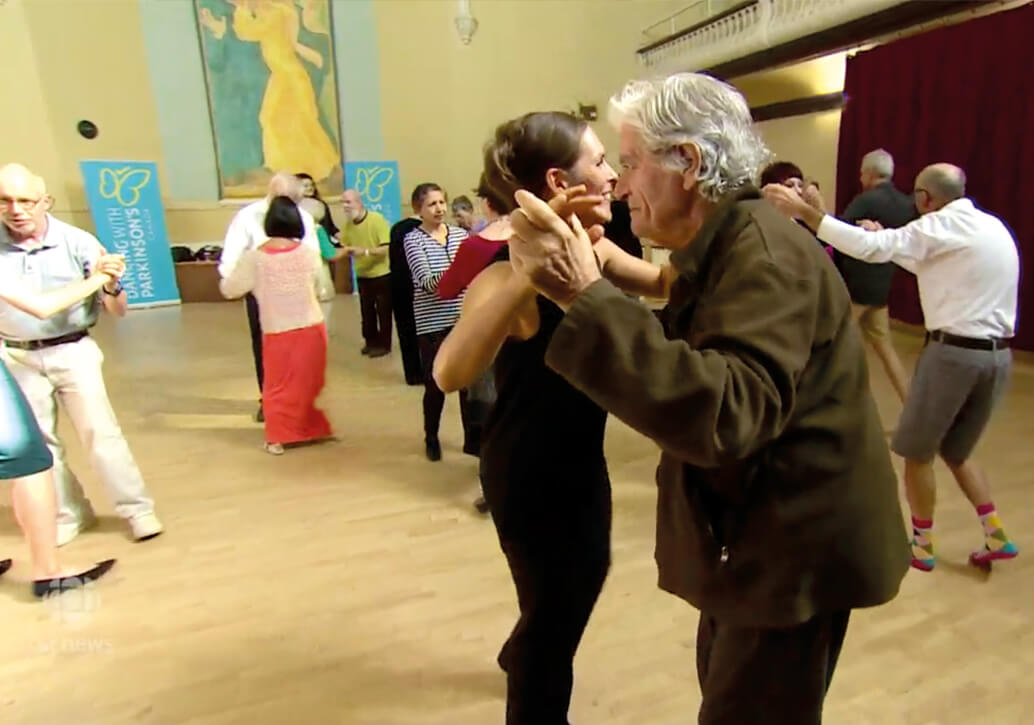Parkinson’s disease is a progressive neurological disorder that impacts movement, coordination, and balance. It results from a depletion of dopamine-producing cells in the brain. Although there is no cure for Parkinson’s, various treatments can help manage its symptoms, such as dancing.
Dance has emerged as a promising treatment for individuals with Parkinson’s. It aids in enhancing balance, coordination, and mobility, while also reducing stress, anxiety, and improving mood.
Dancing with Parkinson’s

A novel program called “Dancing with Parkinson’s,” offered by the Joffrey Ballet in Chicago in collaboration with Northwestern Medicine, is proving to be beneficial for people with Parkinson’s. Designed for individuals at all stages of the disease, the program features experienced dance instructors trained to work with Parkinson’s patients. Dance styles like ballet, jazz, tap, and modern dance are incorporated in the classes.
Research on the program has demonstrated its efficacy in improving participants’ balance, coordination, and mobility. Additionally, it led to reduced stress and anxiety levels and an improved overall mood.
“Dancing with Parkinson’s” is an enjoyable, social, and challenging way for people with Parkinson’s to enhance their symptoms while embracing the joys of dance. The program offers the opportunity to meet others with Parkinson’s, fostering new friendships and support networks.
Beyond the physical advantages of dancing, the program also brings about significant social and emotional benefits. The camaraderie and encouragement from peers with Parkinson’s can alleviate feelings of isolation and loneliness, while the program instills a sense of achievement and boosts self-esteem.
Benefits of Dancing with Parkinson’s
Here are some of the benefits of participating in “Dancing with Parkinson’s”:
1. Enhances Balance and Coordination: Dancing requires a continuous focus on balance and coordination, leading to improvements in everyday life.
2. Reduces Stress and Anxiety: The physical activity and social interaction in dance help alleviate stress and anxiety, promoting a more positive mood.
3. Improves Overall Well-being: Dancing can boost mood and well-being by releasing endorphins and fostering positive emotions.
4. Provides Social and Fun Experience: Dancing is an enjoyable and social activity, allowing participants to connect with others and build friendships, especially among fellow individuals with Parkinson’s.
Tips for dance as a form of therapy for Parkinson’s
For those interested in trying dance as a form of therapy for Parkinson’s, here are some tips:
1. Start Slowly and Gradually Increase Intensity: Begin with gentle movements and gradually progress as you become more comfortable.
2. Listen to Your Body: Pay attention to your body’s limits and avoid pushing yourself too hard.
3. Focus on Breathing and Relaxation: Incorporate focused breathing and muscle relaxation techniques to enhance your experience.
4. Seek Supportive Dance Partners or Groups: Finding understanding and supportive dance partners or groups can enhance your enjoyment and comfort.
5. Embrace the Joy of Dance: Remember to have fun and embrace the joy of dancing, making the most of this therapeutic experience.
To explore dance programs specifically tailored for Parkinson’s patients, the Parkinson’s Foundation website and the Michael J. Fox Foundation website offer valuable resources. Additionally, contacting local Parkinson’s support groups or clinics can provide information on available dance programs.
Conclusion
In conclusion, “Dancing With Parkinson’s” presents a unique and effective approach to managing Parkinson’s symptoms and deriving pleasure from the art of dance.
Additionally, it is important to highlight a study published in the journal “Movement Disorders,” revealing that dancing can also improve cognitive function in individuals with Parkinson’s. This six-month dance program resulted in enhancements in memory, attention, and executive function, which are essential cognitive skills for everyday activities.
For more information on the cognitive benefits of dancing for Parkinson’s patients, consult your doctor or a physical therapist who can help identify the right dance program for you. Embrace the potential of “Dancing With Parkinson’s” and embark on a transformative journey to enhance both physical and cognitive well-being.
